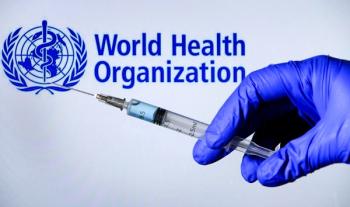
Tuberculosis:
Cutaneous lesions can develop in anumber of pulmonary diseases, suchas tuberculosis and sarcoidosis, as wellas in other diseases that may have pulmonaryinvolvement, such as Wegenergranulomatosis, collagen vasculardiseases, varicella, and pneumococcalinfections. In many cases, knowledgeof the clinical and histologic characteristicsof the skin lesions associatedwith these diseases can greatly facilitatediagnosis.
Cutaneous lesions can develop in a number of pulmonary diseases, such as tuberculosis and sarcoidosis, as well as in other diseases that may have pulmonary involvement, such as Wegener granulomatosis, collagen vascular diseases, varicella, and pneumococcal infections. In many cases, knowledge of the clinical and histologic characteristics of the skin lesions associated with these diseases can greatly facilitate diagnosis. In this article, we will discuss and illustrate the different forms of cutaneous tuberculosis.
PRESENTATIONS
Cutaneous tuberculosis represents a small fraction of the extrapulmonary diseases caused by Mycobacterium tuberculosis. Cutaneous disease occurs in 3 forms: tuberculous chancre, which results from primary inoculation in a person without immunity; tuberculosis verrucosa cutis, which results from inoculation in a previously infected person; and reactivation cutaneous tuberculosis. The latter form of cutaneous tuberculosis is far more common than the others.
Tuberculous chancre. In this form of disease (also called primary inoculation tuberculosis), a tuberculous chancre arises about 2 to 4 weeks after M tuberculosis inoculation in a previously uninfected person. This small, red papulonodule develops at the site of inoculation; it rapidly enlarges, and then ulcerates. Over the next several weeks, lymphatic infection produces a painless regional adenopathy, thereby creating an extrapulmonary Ghon complex.1 Tuberculous chancre appears most commonly on the face and extremities, especially the hands. The purified protein derivative (PPD) test result is initially negative; PPD results become positive when the chancre heals. The differential diagnosis of tuberculous chancre includes entities that present with a lymphocutaneous pattern, such as sporotrichosis, infection with atypical mycobacteria (for example, Mycobacterium marinum), and cat-scratch disease. Diagnosis is made by cutaneous biopsy, which reveals caseating granulomas and acid-fast bacilli. Most tuberculous chancres resolve spontaneously. However, if condi-tions predispose, progression to scrofuloderma may occur in some patients.
Tuberculosis verrucosa cutis. Historically known as "prosector wart," tuberculosis verrucosa cutis results from exogenous inoculation of M tuberculosis in a previously infected person who has a moderate or high degree of immunity. Because trauma plays a role, the lesions are most common on the hands and feet. The lesion begins as a solitary papulonodule that acquires a scaly, verrucous surface (Figure 1). Expansion of the lesion produces an annular, verrucous, red-brown plaque. Without therapy, tuberculosis verrucosa cutis follows a chronic course with central healing and centrifugal expansion. At its onset, tuberculosis verrucosa cutis frequently is mistaken for a common wart. Later in its course, the differential diagnosis includes the fungal infections blastomycosis and chromomycosis, as well as chronic vegetating plaques caused by infection with atypical mycobacteria. The diagnosis is confirmed by 2 skin biopsy results, one for routine histopathology and the other for mycobacterial culture. Histologically, tuberculoid granulomas with or without caseation are seen. Acid-fast bacilli often are present but rarely are numerous. Although the PPD test result is positive uniformly, it is important to note that it may be positive in atypical mycobacterial infections also.
Reactivation cutaneous tuberculosis. This form of cutaneous tuberculosis includes lupus vulgaris and scrofuloderma (tuberculosis colliquativa cutis). Lupus vulgaris. This is the most common form of cutaneous tuberculosis in Western countries. While some authors have stated that lupus vulgaris usually represents a reinfection of the patient's skin with M tuberculosis, we believe, as do others, that it probably represents reactivation or extension of previous infection with a single strain of M tuberculosis.2
Lupus vulgaris occurs in persons who have relatively high immunity against M tuberculosis. It develops after the patient has had cervical tuberculous adenitis or pulmonary tuberculosis. For unknown reasons, women with this condition outnumber men by 2 to 1. The lesions of lupus vulgaris are most common in the head and neck region (90%). Small, red-brown papules coalesce and form annular plaques with elevated borders and slightly depressed, scarred centers (Figure 2). Diascopy (viewing of the lesion when compressed by a glass slide) reveals a so-called apple-jelly color corresponding to intradermal granulomas. Lupus vulgaris must be distinguished from cutaneous sarcoidosis and discoid lupus erythematosus. The biopsy specimen reveals noncaseating tuberculoid granulomas, and acid-fast bacilli are nearly always absent. Biopsy culture may be positive or negative for M tuberculosis.2 More recently, the polymerase chain reaction has been used to identify M tuberculosis in biopsy specimens from cutaneous lesions.3 Untreated lupus vulgaris lesions follow a chronic progressive course with central scarring and contracture formation. Long-standing lesions are predisposed to the development of cutaneous squamous cell carcinoma.4Scrofuloderma. Tuberculosis colliquativa cutis, or scrofuloderma, represents cutaneous extension from an underlying lymphadenitis, osteomyelitis, or other soft tissue M tuberculosis infection. Scrofuloderma usually is seen overlying the patient'Tuberculosis verrucosa cutiss clavicle, knees, or ankles. These lesions begin as firm, deepseated subcutaneous nodules affixed to the underlying tissue. Surface ulceration leads to sinus tract formation with the discharge of purulent, caseous material (Figure 3). Long-standing lesions are characterized by extensive scarring and deformity.4 Although persons with scrofuloderma have a positive PPD test result, most have a relatively low degree of immunity to M tuberculosis. Cutaneous biopsy specimens reveal caseating tuberculous granulomas with numerous acid-fast bacilli. Cultures of purulent material readily grow M tuberculosis.
Rare forms of cutaneous tuberculosis. Disseminated miliary cutaneous tuberculosis and tuberculosis cutis orificialis are 2 rare forms of cutaneous tuberculosis. Both are associated with a poor prognosis. Miliary cutaneous tuberculosis. This disease is seen in infants and small children who have widespread systemic tuberculosis. Affected patients are systemically ill and present with numerous discrete pinpoint erythematous papules and papulovesicles. Acid-fast bacilli are readily identified in biopsy specimens. Tuberculosis cutis orificialis. This is a rare form of reactivation cutaneous tuberculosis that affects patients with impaired immunity and widespread systemic infection with M tuberculosis. Nonhealing ulcers develop in a periorificial distribution. Biopsy specimens reveal acid-fast bacilli. Cutaneous involvement also may occur at the site of BCG vaccination, which is commonly administered outside the United States. This very rare local infection with the attenuated bacillus has been labeled "BCG-itis" (Figure 4).5 The clinical appearance of BCGitis may be similar to that of lupus vulgaris or scrofuloderma, or BCG-itis may present as an ulceration, lymphadenitis,or erythematous eczematous patches. One case of widespread BCGitis reportedly responded to isoniazid.6
TREATMENT
Therapy for cutaneous tuberculosis is the same as for systemic tuberculosis. The 4 major goals are to:
•Render the patient noninfectious as soon as possible.
•Promptly cure the patient's disease, thereby reducing morbidity.
•Prevent the emergence of resistant strains.
•Eliminate persistent disease and possible relapse.1
Because of resistant strains of M tuberculosis, single-drug treatment with isoniazid or rifampin has become obsolete. 2 A 4-drug regimen consisting of isoniazid, rifampin, pyrazinamide, and ethambutol or streptomycin is recommended now for the first 2 months.1,4,7,8 Then, after drug susceptibility results have been determined, the patient's antituberculosis regimen can be appropriately modified. For most patients, treatment is given for a total of 6 to 9 months.
References:
REFERENCES:
1.
Sengal VN. Cutaneous tuberculosis.
DermatolClin.
1994;12:645-653.
2.
Marcoval J, Servitje O, Moreno A, et al. Lupusvulgarism.
J Am Acad Dermatol.
1992;26:404-407.
3.
Margall N, Baselga E, Coll P, et al. Detection of
Mycobacterium tuberculosis
complex DNA by thepolymerase chain reaction for rapid diagnosis ofcutaneous tuberculosis.
Br J Dermatol.
1996;135:231-236.
4.
Gawkrodger DJ. Mycobacterial infections. In:Champion RH, Burton JL, Burns DA, BreathnachSM, eds.
Rook/Wilkinson/Ebling: Textbook of Dermatology.
6th ed. Oxford, England: Blackwell ScienceLtd; 1998:1181-1214.
5.
Postrovsky A, Sagher F. Dermatological complicationsof BCG vaccination.
Br J Dermatol.
1963;75:181-192.
6.
Lee SM, Hann SK, Chan SI, et al. An unusualform of skin tuberculosis following BCG vaccination.
J Dermatol.
1994;21:106-110.
7.
Initial therapy for tuberculosis in the era of multidrugresistance. Recommendations of the AdvisoryCouncil for the Elimination of Tuberculosis.
MMWR.
1993;42(RR-7):1-8.
8.
Simone PM, Iseman MD. Drug-resistant tuberculosis:a deadly-and growing-danger.
J RespirDis.
1992;13:960-971.
Newsletter
Enhance your clinical practice with the Patient Care newsletter, offering the latest evidence-based guidelines, diagnostic insights, and treatment strategies for primary care physicians.






















































































































































































































































































